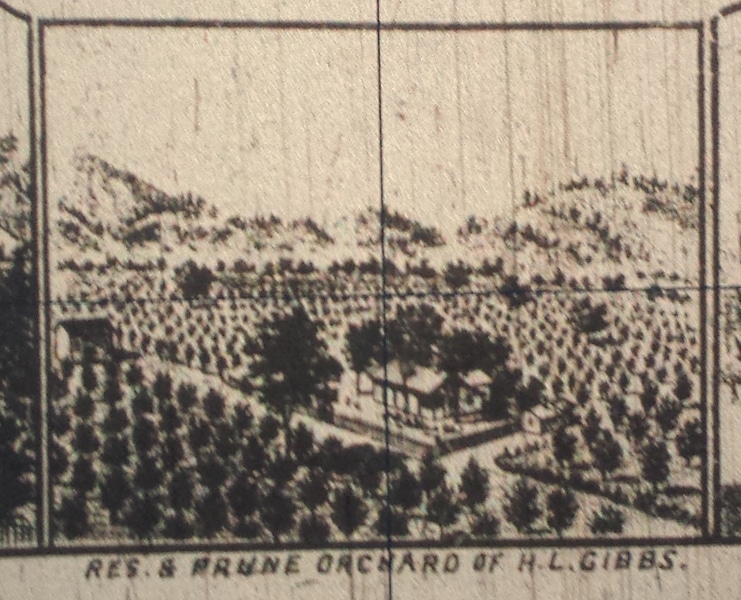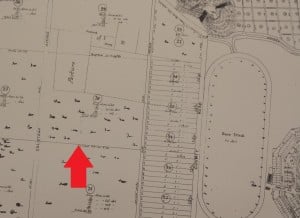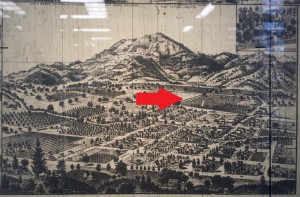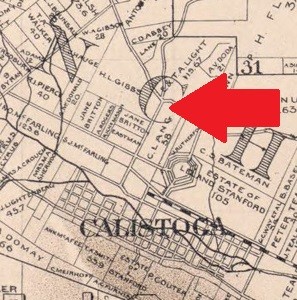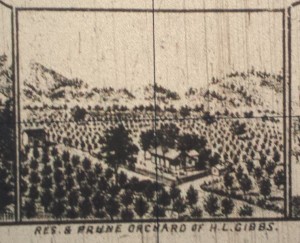 Horace Lockwood Gibbs was well known in his day. Born in New York about 1851, Horace married Wisconsin native Nora P. his same age. In 1881, Gibbs had a vineyard of 2.5 acres with 2,500 vines in Calistoga (perhaps on or near his Money Lane property). The Selected U.S. Federal Census Agriculture Schedule for 1880 shows he also grew cereal and wheat crops, cattle, swine, and apples, but his greatest produce was French prunes. In 1900, the local newspaper noted Gibbs handled 1,000 tons of prunes, making him one of the largest prune producers in the county. Gibbs ran his agricultural business on Lots 26, 27, 28, 29, and the portion of 30 where Money Lane runs today. He produced prunes in such quantities that his Calistoga farm was known as “Pruneville.”
Horace Lockwood Gibbs was well known in his day. Born in New York about 1851, Horace married Wisconsin native Nora P. his same age. In 1881, Gibbs had a vineyard of 2.5 acres with 2,500 vines in Calistoga (perhaps on or near his Money Lane property). The Selected U.S. Federal Census Agriculture Schedule for 1880 shows he also grew cereal and wheat crops, cattle, swine, and apples, but his greatest produce was French prunes. In 1900, the local newspaper noted Gibbs handled 1,000 tons of prunes, making him one of the largest prune producers in the county. Gibbs ran his agricultural business on Lots 26, 27, 28, 29, and the portion of 30 where Money Lane runs today. He produced prunes in such quantities that his Calistoga farm was known as “Pruneville.”
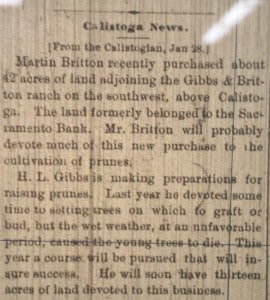 Gibbs often worked with Martin Britton. Britton, born in New York in 1820, was married to Jane Britton, born in 1832 in New York. They had at least one child, Frank. Before arriving in Calistoga, the Brittons lived in San Jose; despite claiming residency in Calistoga on the deed, it appears the Brittons main residence remained in San Jose. The Brittons did retain some Napa County property, possibly to support his fruit growing business operated out of Santa Clara County. Gibbs and Britton’s professional relationship extended beyond farming, despite living far from each other. In 1881 they filed a patent for car coupling, possibly inspired by their frequent use of railroad cars to transport their produce.
Gibbs often worked with Martin Britton. Britton, born in New York in 1820, was married to Jane Britton, born in 1832 in New York. They had at least one child, Frank. Before arriving in Calistoga, the Brittons lived in San Jose; despite claiming residency in Calistoga on the deed, it appears the Brittons main residence remained in San Jose. The Brittons did retain some Napa County property, possibly to support his fruit growing business operated out of Santa Clara County. Gibbs and Britton’s professional relationship extended beyond farming, despite living far from each other. In 1881 they filed a patent for car coupling, possibly inspired by their frequent use of railroad cars to transport their produce.
In an article in the October 13, 1893 edition of the Napa Register, Gibbs’ property was described in detail:
At Mr. H. L. Gibbs’ prune ranch, near Calistoga, work has been going on for over two weeks, the average output being about twenty tons per day. Mr. Gibbs has about forty hands employed at present…The wages paid run from 65 cents a day for boys and girls up to $1.50 for their labor, while other harder and heavier labor runs higher…Mr. Gibbs will have about another week’s work of gathering, after which the work will be confined to drying and preparing for market, when the force will be reduced to about 15 hands for two weeks and then to 10 hands for about two weeks more, when the season will close…Mr. Gibbs employs only white labor.
The White Labor Union, whose Executive Committee is headed by N. W. Collins, has been instrumental in having Mr. Bourn, living near St. Helena, discharge 80 Chinamen, filling their places with white men. It has also found places for about 110 men to date.”
The aforementioned “Bourn” was William Bowers Bourn Jr., founder of Greystone Winery, now the Culinary Institute of America in St. Helena. Greystone was constructed in 1889.
The issues revolving around the races of laborers is tied back to the Chinese Exclusion Acts and the push to remove immigrants – particularly non-white immigrants – from the labor supply. In St. Helena in 1886, there was a push to convince vineyardists to switch from Chinese to white labor, but there weren’t enough white people to do the work. Some farmers brought in “colored labor” (African Americans) from the South. In August 1893, a white labor union was formed in Calistoga, and they targeted Chinese laborers in prune orchards, so Gibbs’ comment about his labor conditions was timely PR.


